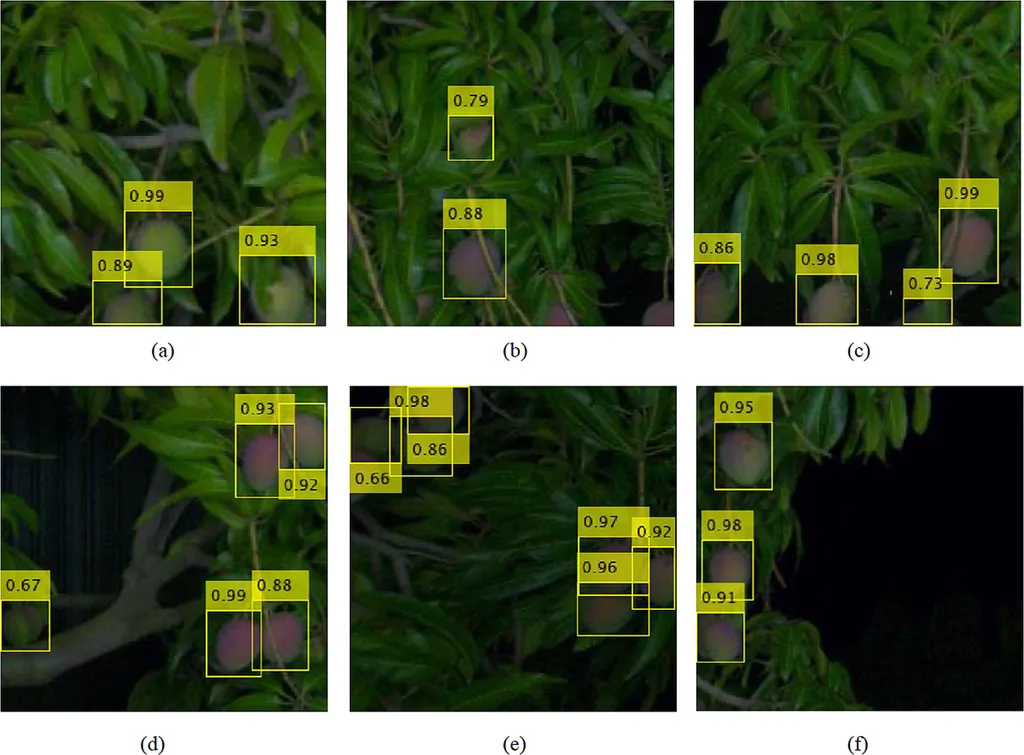In the ever-evolving landscape of agricultural technology, a groundbreaking development has emerged that promises to revolutionize fruit detection in challenging environmental conditions. Researchers have introduced a novel framework called the Dynamic Coding Network (DCNet), designed to enhance the accuracy and efficiency of fruit detection in low-visibility scenarios such as fog, rain, and low illumination. This innovation holds significant potential for intelligent orchard management and robotic harvesting, addressing a critical need in the agriculture sector.
The study, published in *Frontiers in Plant Science*, was led by Hanyun Lu from the Hubei Key Laboratory of Intelligent Vision Based Monitoring for Hydroelectric Engineering at China Three Gorges University. The research focuses on overcoming the limitations of existing detection models, which often experience performance degradation under visually challenging conditions. DCNet’s modular architecture comprises four key components: a Dynamic Feature Encoder for adaptive multi-scale feature extraction, a Global Attention Gate for contextual modeling, a Cross-Attention Decoder for fine-grained feature reconstruction, and an Iterative Feature Attention mechanism for progressive feature refinement.
The results of the study are impressive. Experiments conducted on the LVScene4K dataset, which includes multiple fruit categories such as grape, kiwifruit, orange, pear, pomelo, persimmon, pumpkin, and tomato, demonstrated that DCNet achieves a mean average precision of 86.5% and an intersection over union of 84.2%. Compared to state-of-the-art methods, DCNet improves the F1 score by 3.4% and the intersection over union by 4.3%, all while maintaining a real-time inference speed of 28 frames per second on an RTX 3090 GPU.
“Our goal was to create a system that could reliably detect fruits in various low-visibility conditions, which is crucial for the automation of agricultural processes,” said lead author Hanyun Lu. “The modular architecture of DCNet not only enhances detection accuracy but also facilitates generalization to other crops and complex agricultural environments.”
The commercial implications of this research are substantial. Accurate fruit detection under challenging conditions can significantly improve the efficiency of robotic harvesting, reducing labor costs and increasing yield. This technology can be integrated into existing agricultural systems, providing real-time data that can inform decision-making processes and optimize resource allocation.
Moreover, the modular nature of DCNet allows for easy adaptation to different types of crops and environmental conditions, making it a versatile tool for the agriculture industry. As the demand for automated and intelligent farming solutions continues to grow, innovations like DCNet are poised to play a pivotal role in shaping the future of agriculture.
The study’s findings suggest that DCNet could be a game-changer for the agriculture sector, offering a robust and efficient solution for fruit detection in low-visibility scenarios. As the technology continues to evolve, it has the potential to transform the way we approach agricultural management, paving the way for more sustainable and productive farming practices.

